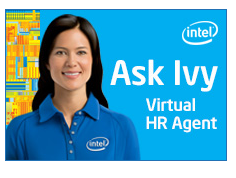More proof that lots of us are horrible people who haven't grown up
The things we did at the age of 12 or 14 or even 18, while potentially cringe-worthy when thinking back on them, we like to think are safely left in the past and can be chalked up to and rationalized away by some combination of youth, peer pressure, insecurity, and simply not knowing better. We all did dumb or cruel or even borderline criminal things at some point. But most of us, we think, have left that nonsense behind as we've grown up, become educated, pursued our careers, and maybe even had kids of our own, (who surely, won't make the same mistakes we did).
And I think that is mostly true. Even if you were a part of the 'cool kids' group in school and made fun of or hassled, or even just ignored the 'non-cool' kids, ('cool' and 'non-cool' being completely elusive and situational concepts, but I am sure you know which group you were a part of), you've moved on. Because the things or attributes that defined 'cool' and 'non-cool' when you were 15 are certainly not really relevant or meaningful in the adult world, and particularly in the workplace. How someone dresses, their hobbies, even their physical attractiveness - all pretty important things in the social order in high school - don't really factor in to the day-to-day at work. Or at least they shouldn't. Ready-to-wear, Stuart Davis 1955
Ready-to-wear, Stuart Davis 1955
But perhaps they still do, in more ways than we care to think about, and in ways we'd prefer to ignore.
Check the details from a recent study on the influence of attractiveness on what is termed as 'Counterproductive workplace behaviors' by professors at Michigan State and Notre Dame:
People who are considered unattractive are more likely to be belittled and bullied in the workplace, according to a first-of-its-kind study led by a Michigan State University business scholar.
“Frankly, it’s an ugly finding,” said Brent Scott, associate professor of management and lead investigator on the study. “Although we like to think we’re professional and mature in the workplace, it can be just like high school in many ways.
”While plenty of research has found that attractive students tend to be more popular in school, the study is the first to link attractiveness to cruelty in the workplace. The results appear in the research journal Human Performance.
The study surveyed a group of workers at a health care facility about their experiences with counterproductive workplace behaviors like being made fun of, being treated cruelly, or having hurtful things said about them. Then a set of unrelated people evaluated the worker's 'attractiveness' on a sliding scale. Mashing up the data the researchers found that "the unattractive workers were treated much more harshly than attractive employees even when other key factors were taken into account, including age, gender and how long they had worked at the health care facility."
Not all jobs are fun. Most jobs are not all that noble. Not many jobs pay as well as we'd like. That's life and that's work. And there isn't much we can to to make a cashier job at the Walmart all that more appealing.
But every job, or rather every person that shows up to work, deserves an environment where they won't be subject to the kinds of cruel treatment that more and more we are not even tolerating from teenagers or kids.
Take ten minutes this week at your shop - once you get past the transactions and documents and emails and all the stuff that seems to keep coming at you in relentless waves - and think about this one point - if people in your organization are being treated poorly at work simply because of the way they look, you can be sure it didn't suddenly start when they came to work for you.
No, it is a pretty safe bet they have been picked on, pushed around, and belittled for a long, long time. Maybe even their entire lives. Maybe they thought, or hoped, that once they 'grew up' that the jerks would grow up too, or at least they wouldn't have to be forced to deal with them.
Maybe they thought or hoped that 'going to work', while no picnic all the time, would at least be somewhere safe or maybe even pleasant.
Is it 'your' job to protect or at least stand up for these people?
Yes it is. It is all of our jobs.

 Steve
Steve

